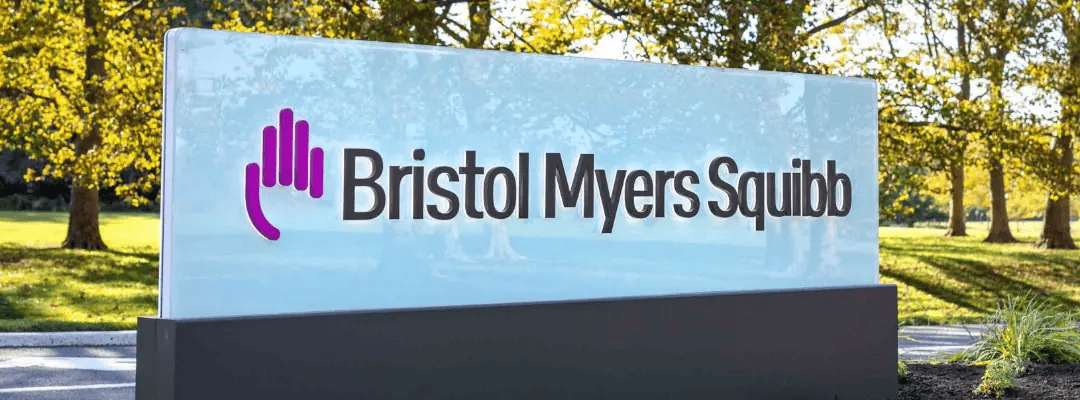CASE STUDY
Bristol Myers Squibb: Treasury transformation through digital automation
A merger spurs an industry-leading pharmaceutical company to reinvent its treasury function
Mergers and acquisitions, though challenging, are opportunities for visionary businesses to transform. When pharmaceutical giant Bristol Myers Squibb (BMS) acquired Celgene, the company was tasked with merging two mature treasury functions—adopting a treasury-forward mindset that leveraged the strengths of both companies while maintaining a focus on industry-leading practices.
BMS partnered with an AI-driven platform to activate its ambitious "Treasury Forward “initiative, executing a series of projects that ranged from intelligent automation to large-scale process harmonization across international treasury, global cash, and insurance functions. Post-merger, BMS’s treasury function emerged as a modern, digital operation, led by an award-winning team (Treasury Today’s Top Treasury Team of the Year).
CLIENT

INDUSTRY
Pharmaceutical and life sciences
FEATURING
Deals
Finance Transformation
Automation
$5M+
in annual bank and liquidity optimization benefits
~95%
reduction in data entry errors by enabling straight-through processing for financial transactions
50+
Distinct projects and small automations achieved with the help of an AI-driven transformation platform, saving many hours of recurring annual work across teams.

Building enterprise-wide trust amid mergers, company transformation and new ways of working

SITUATION
More than a merger: BMS prepares to transform its treasury function
Mergers and acquisitions can present various challenges, but they also offer visionary businesses the opportunity to undergo transformative change. In the case of Bristol Myers Squibb (BMS) acquiring Celgene, the challenge was merging two well-established treasury functions. BMS approached this with a treasury-forward mindset that leveraged the strengths of both organizations and fostered a culture of continuous improvement. To bring its ambitious “Treasury Forward” initiative to life, BMS partnered with an AI-driven platform and launched a series of successful projects. These initiatives included automations and large-scale process harmonizations across international treasury, global cash, and insurance functions. As a result, the BMS treasury function emerged as a modern, fully digital operation.
Mergers and acquisitions can be a challenge for any organization. They require innovation as well as tried-and-true knowledge, big-picture thinking as well as attention to detail, and expansive planning as well as focused execution. Managed properly, they can be transformative, realizing the value of a deal and helping to position a company for a strong future. But it takes significant effort and experience to complete an M&A deal that results in an integrated, high-functioning organization that’s ready to achieve its goals from day one. When BMS announced its acquisition of Celgene, its finance function undertook several mission-critical projects related to the acquisition. In particular, merging the treasury functions would require strategic thinking and careful execution.
The BMS treasury team needed to integrate personnel and processes without disrupting operations — no small feat, even for seasoned professionals. BMS brought in an AI-driven platform to advise the organization, helping it meet pressing needs and tight deadlines, address merger-related challenges, and position itself to emerge as a stronger and more strategic organization.
Charting a new course
Integrating two teams of similar scale — each with its own processes, systems and culture — requires trust, dedication and a mindset shift during a high-pressure period. To operate as one company, both entities should find synergies as they integrate their ways of working and merge their operating models. To build its blueprint and reach its goal of a consistent integration, the BMS treasury team had to clear a few hurdles.
The transaction required a high volume of focused, executional work that left BMS and Celgene with little free time to plan and act on an improved future state. This was true across finance but especially within the treasury function, where any delays in execution can have significant economic and reputational consequences. The BMS and Celgene teams had different ERP systems, treasury systems, workflows and governance models. These systems had to be merged, integrated and reconciled without causing disruption. In parallel, BMS treasury leadership also wanted to take advantage of process enhancement opportunities.
Despite resource constraints and a tight timeline, the BMS treasury team had a clear vision. It aimed to help drive business continuity and value while positioning the company for future success. Its proactive approach and ability to navigate these changes are what set the company up to thrive in a post-merger environment.

SITUATION
Honing a Treasury Forward vision
Once the merger and integration of the two companies was well underway, BMS saw a chance to further develop an exceptional, modern treasury operation that could live on long after the deal. Both organizations wanted to reorient toward shared goals and new outcomes. At the same time, reaching the share goals required operational and technological improvements that would be immediately apparent in employees’ day-to-day activities.
Leaning in to industry leading practices
The Treasury Forward initiative brought together people, processes, and technology to pursue three main objectives: automating treasury activities, accelerating data and insight generation, and digitally upskilling the team. With these goals in mind, the BMS treasury team worked closely with an AI-driven platform to analyze pain points, define goals, suggest process harmonizations, and recommend industry-leading practices. With a clear course charted, BMS and the platform planned and executed a series of projects designed to help realize the desired end state. In many cases, the process was iterative: BMS and the platform developed and refined programs in stages, evolving in alignment with the Treasury Forward vision — a testament to the culture of continuous improvement established by the BMS treasury team. As success built upon success, the initiative gradually expanded to include more departments, teams, and functions.
In the end, the BMS treasury team participated in over 50 Treasury Forward projects across the business. Each one centered on the concept of continuous improvement and further alignment with modern finance and treasury leading practices. The main areas of focus were within international treasury, global cash operations and insurance.

RESULTS
A reinvented BMS treasury function
The BMS-Celgene merger demonstrated that M&A deals don’t just happen on paper. Successfully combining people, processes, and technology for the long term requires daily executional rigor, vision, commitment, and consistent investment across the organization. After the Celgene acquisition, the BMS treasury team established itself as an industry-leading operator within a modern finance framework. Along the way, an AI-driven platform provided BMS with executional bandwidth and end-to-end support across its treasury functions, with a strong focus on process improvement and automation throughout.
The engagement, which spanned multiple projects and departments, increased productivity and reduced risk. It supported not only the Celgene merger but also two other major acquisitions and integrations, creating a repeatable template for effective integration and fostering a continual growth mindset. Together, BMS and an AI-driven platform implemented 16 system and process harmonizations during the merger, with plans for more than 20 additional initiatives. In the initial launch alone, just 10 new treasury automations saved over 1,500 hours of recurring manual work each year.
Overall, the treasury team used the opportunity to build trust internally at BMS even through mergers, transformation and new ways of working. As a result, the BMS treasury team adopted leading-practice processes and technologies that can help drive future growth. The company benefited from its merger with the help of its forward-thinking approach and investment in digital transformation.
Integration without disruption
A unified integration was always the goal. There was a wave-by-wave integration of Celgene’s financial processes and data into the BMS backbone with no interruption to customer-facing operations. The new workflows increased capabilities and lowered risk across the finance organization. Each new integration helped bring the companies closer together, uniting two cultures into one entity with a shared vision.
Pagovision for Businesses
Terms & Conditions.
Privacy Policy
HIPAA
© 2025 Pagovision Inc

 Powered by Pagovision
Powered by Pagovision